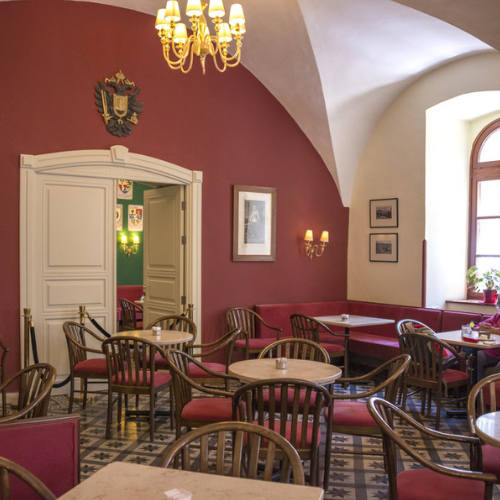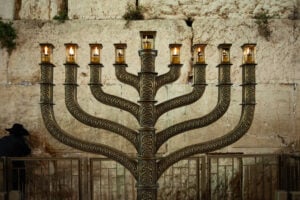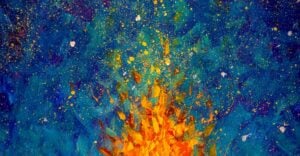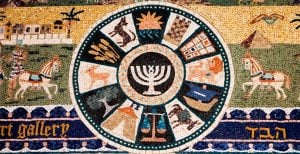Jerusalem is the capital of Israel and is at the heart of the Jewish people. Jews have been inhabiting the city for thousands of years, but the history of Jerusalem has had a strong Christian influence as well. Jews have only been a majority of Jerusalem’s population since the Ottoman Empire, and before they were a majority, Christians were. Jerusalem was an “international city”, meaning it did not belong to a single country, and missionaries from around the world took advantage of this. A few neighborhoods around Jerusalem were originally colonies for Christian pilgrims, and while the residents have changed over the years, the history has stayed as interesting as ever. While the number of Christian residents has diminished, a few of these original institutions have remained Christian, contributing to Jerusalem’s diverse past and present. Some of these places are incredibly popular and some are hidden secrets, but they were all built during Jerusalem’s time as an international city.
American Colony Hotel

The American Colony Hotel on Mount Scopus is all that is left of the American Colony of Jerusalem. Established in 1881 by Anna and Horatio Spafford from Chicago, the colony was created as a Christian utopian society, where members would participate in philanthropic work for all the residents of Jerusalem. They opened hospitals, soup kitchens and other useful charities but unfortunately it did not last long, as the colony and their mission no longer exists. The hotel opened in 1902 and has been in business ever since, often hosting famous people like Bob Dylan, Uma Thurman and Tony Blair. The American Colony Hotel is known to be a place of peace and serenity.
The Austrian Hospice

On Via Dolorosa Street in the Muslim Quarter of the Old City, you’ll find a little taste of Europe with the Austrian Hospice. The hospice opened its doors in 1863 as one of Israel’s first guesthouses, specifically for Christian pilgrims from Austria and German speaking countries. In 1939, the hospice was seized by the British and turned into an internment camp for German priests and monks. Later in 1948, the Austrian Hospice became a military hospital for the Red Cross and afterwards became a Jordanian hospital from 1948 until 1967, when Israel took back Jerusalem. The hospice was returned to Austria in 1985, when it was restored and reopened as a guesthouse. The Austrian Hospice is still used by Christians today, and is best known for the views over the Old City of Jerusalem as well as for the Viennese café, featuring classic Viennese specialties. Rumor has it, the Austrian Hospice has the best apple strudel on this side of the Mediterranean!
German Colony

One of Jerusalem’s most expensive neighborhoods is the German Colony, which was originally established as a German Templer community in 1873. Today, little is left of Templer society aside for a number of European style buildings they built themselves and the Templer cemetery, but the history is incredible. The Templers moved from Germany to Jerusalem to prepare for the Messiah, creating a neighborhood for themselves with everything they might need. However, as World War Two began, the British Mandate deported the Templers as they were seen as the German enemy. They left their building intact which can be found on the bustling Emek Refaim Street, which is full of cafes, restaurants and boutique shops. The German Colony is one place in Jerusalem where one can see the past meeting the present.
Greek Colony

Not many people know about the Greek Colony, as many think of it to be a continuation of the German Colony. The area of the Greek Colony borders the German Colony, and is home to many more upscale homes. The neighborhood was established in the early 1900s by the rich Greek Orthodox members, as a way to solve the housing crisis in the Christian Quarter of the Old City. Architect Spyro Houri designed 20 beautiful homes and a community center that is still in use today by Christians and Jews of Greek heritage, as well as to share Greek culture with Israelis. Many of the Greeks left in 1948 during the War of Independence, and apartment buildings were built to accompany the influx of Jewish immigrants. Today, the neighborhood has reestablished its traditional look of class, and some of the original homes have been restored. The most famous of these homes is the Efklides Residence, the one floor mansion nestled away deep into the neighborhood.
The Italian Hospital

While it might be located on the edge of the ultra-Orthdox neighborhood of Meah Shearim, the Italian Hospital stands out almost like a palace in a city of regular folk. Considered to be one of the most beautiful buildings in Jerusalem, it was designed by Antonio Barluzzi, an Italian who fell in love with Israel and designed churches throughout the country. The building used to contain a hospital and a church, with a bell tower that looks over the city, all done in Florentine Renaissance style. The cornerstone for the hospital was laid in 1910, but construction was only finished in 1919, with a delay in building during the Italo-Turkish War. Italian nurses ran the hospital until the Ottoman Empire seized control over the hospital. During World War Two, the British Royal Air Force took control over the hospital and used it as headquarters. In the War of Independence in 1948, the IDF took the building and used the bell tower as an observation post. The building was eventually returned to the Italians who then sold it to Israel in 1963. Today, the Italian Hospital is home to Israel’s Ministry of Education and Culture.
Russian Compound

One of the oldest districts in Jerusalem, and one of the oldest structures outside the Old City is the Russian Compound. The building of the compound which included Christian hostels, a hospital, the Russian Consulate, and the Holy Trinity Cathedral started in 1860 and ended in 1890. During World War One, all Russians were expelled from Israel, and the compound was used by the Ottomans. After the Ottomans left Israel and the British Mandate took over, the Russian Compound became a headquarter for the British, using the buildings as offices and one of the former hostels became a prison for Jews who fought in underground movements. After 1948, the Russian Compound was returned to Russia, and Russian pilgrims began to return to Jerusalem. In 1964, most of the compound was bought by the Israeli government and used as offices, but there are still a few buildings in Russia’s possession, including the Holy Trinity Cathedral. The Russian Compound is being renovated to become a place of culture as it is home to the new campus of the Bezalel Academy of Arts and Design.
While there is plenty more that was built during this time period, these are just a few areas that have had a major impact on Jerusalem, and the city would not be the same without it. To be able to visit these areas is to see a different part of Jerusalem is to learn about a more unspoken history, one that was originally influenced by the international world. While the city itself is a bustling center for the Jewish people, it is important to know where modern day Jerusalem came from, and that a majority of it is because of the Christian pilgrims who came during mid-1800s. The history of Jerusalem seems never ending as the city is thousands of years old, but there is always something interesting to learn!






